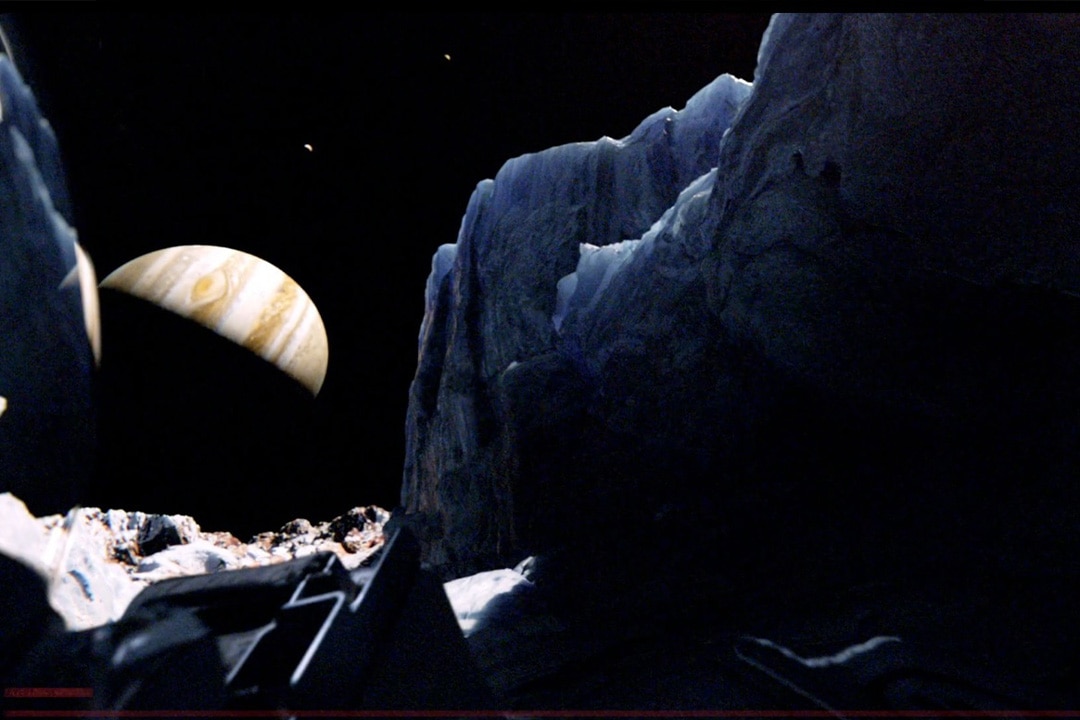Create a free profile to get unlimited access to exclusive videos, sweepstakes, and more!
NASA developing robotic eels to explore alien worlds
If there are any eels down there already, this is their Transformers moment.

In the 2013 science fiction thriller, Europa Report (now streaming on Peacock!), a private company called Europa Ventures sends six astronauts on the first crewed mission to Jupiter’s icy moon, Europa. Along the way, they encounter a variety of threats from dangerous solar flares to mysterious entities living on the icy ocean world. The story is told from an outside perspective, using mission data retrieved after the fact. It has to be told that way, because every member of the crew is dead. Space exploration isn’t for the meek.
Finding alien life on another world might be a mixed bag. It would confirm once and for all that we’re not alone in the universe, but it could also end in tragedy. For us or for them. Which is part of the reason that we’re going to send a whole bunch of cool robots to explore alien ocean worlds long before we send any scuba-clad astronauts.
RELATED: Are alien oceans too freezing for life-forms?
While NASA and other space agencies have plans to send spacecraft to visit Europa (including the upcoming Europa Clipper mission), that isn’t the only ocean world in the solar system we’re planning to visit. Astronomers have their sights set on even stranger worlds, using equally bizarre machines. The appropriately named Exobiology Extant Life Surveyor (EELS) is designed to traverse and explore the rugged and ever-changing terrain of Saturn’s moon Enceladus.
Data from the Cassini orbiter revealed that much like Europa, Enceladus likely has a liquid water ocean beneath its frigid exterior. The liquid water sublayer is revealed by large plumes of water bursting from the surface, and those plumes might also provide a doorway to the ocean beneath. EELS is “designed to be adaptable to traverse ocean-world inspired terrain, fluidized media, enclosed labyrinthian environments and liquids, according to NASA’s Jet Propulsion Laboratory (JPL).
In order to deal with the frozen, craggy surface and tight spaces of Enceladus, NASA has ditched their tried and true rover design in favor of something more slithery. Something long and slender, eel-like, even. The craft will be made up of multiple, identical segments, each containing their own power, communications, actuation, and propulsion systems. Each segment features a first-of-its-kind rotating propulsion unit which acts as a gripper, track, and propeller for moving along the solid surface and the water sub-layer.
RELATED: ESA's 'Jupiter Icy Moons Explorer' launches to JUICE up the search for life on Jovian moons
At present, the project is still in development, but a prototype has been built and tested on Earth. Once the craft’s locomotion is nailed down, the final product will be loaded up with all kinds of exploratory and scientific instruments. When EELS touches down on the surface of Enceladus, it will be equipped with sensors to monitor subsurface temperature, pressure, and any electrical activity in the water. It will be capable of mapping its environment with a suite of cameras, including onboard LiDAR, and it will be supported by a long tether stretching from the back of the craft, connecting it to power and communications support systems on the surface.
With more than 20 points of articulation (enough to make most action figures jealous) it will be capable of twisting and bending into a variety of forms, allowing it to weasel its way through cracks and crevices, into plume escape vents, and into the shrouded alien ocean below.
While EELS is headed to Enceladus or bust, similar machines using the same strategies could be used to explore the polar ice caps of Mars or even to better understand the ice caps and glaciers of our own world. Sometimes, if you want something done right, you need a robotic space exploring snake to do it for you.
If you want to know what not to do on ocean worlds, catch Europa Report, streaming now on Peacock!




























